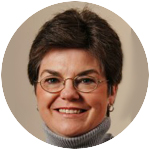My husband’s father and my mother came from diverse backgrounds.
My father-in-law grew up in an East Coast urban tenement with his Italian immigrant parents. He was teased for the greasy eggplant sandwiches his mom packed for school lunch. Later, he succeeded in business, but until he came to the Midwest for our wedding, I don’t think he ever strayed far from the Eastern Seaboard.
Mom was born on a Nebraska farm that her father lost during the Great Depression. She went to work young, eventually landing on another small dirt farm raising a tribe of kids.
But one thing these two had in common? A love for country singer Patsy Cline.
There aren’t many who remember Cline now, but if you watched Ken Burns’ latest documentary, “Country Music,” released by Public Broadcasting Service in mid-September, you’ve been introduced to Cline and so much more.
[hotblock]
Burns is a masterful storyteller, and his film subjects, which include the Civil War, baseball and the Vietnam War, are always portrayed within the context of American history. Their focus is never so much on the controversial as on the human, and country music lent itself particularly well to Burns’ insightful, gentle style.
There’s an old saying, “She who sings prays twice.” I have always found that true in my own life. It’s not just liturgical hymns that move me, but other music, poetry and art, that help me to be reflective and meditative.
Country music is not just about the stereotypical honky-tonks, pickup trucks and hound dogs. Country has a long history reaching back into the British Isles, incorporating along the way an African influence brought to the South through slavery. It includes Gospel music, and speaks to the emotions of loving, loss, longing and faith.
The late, great Hank Williams, who had his share of struggles in this life, was once asked how he wrote so many hit songs. He said, “I just hang on to the pen and God sends them through me.” That’s how many artists describe the creative process.
So praying twice through singing can happen outside of church. Finding God in all things, as St. Ignatius taught, means that music can lead us into prayer when we least expect it.
However, we do expect, or hope, to be led to prayer through music at church and, sadly, that’s often not the case. Whether you love Gregorian chant, the beautiful meditations of Taize or the St. Louis Jesuits’ music, it must be done well.
[hotblock2]
Much has been made lately of declining Sunday Mass attendance, and among one of the suggestions for a remedy is an idea I heartily endorse: every pastor should reexamine and prioritize his music ministry.
Every parish should have a strong professional music director, able to recruit and nurture talented musicians. Cantors should be accomplished and well-practiced. The hymns should fit the day’s readings.
Music should be user-friendly to the people in the pews. We should feel able to sing along comfortably, even those of us whose best singing is done in the shower. The Second Vatican Council urged full, active and conscious participation by the laity in the liturgy, and I don’t think that meant reading the bulletin during the offertory hymn.
Country music developed on rural front porches and in ramshackle churches. It was enthusiastic, unifying, accessible to different voices and communal. It’s referred to as “three chords and the truth.” It spoke to the hearts of diverse people.
A top-notch music ministry should provide similar gifts on Sunday mornings.
PREVIOUS: Archbishop Chaput, model bishop for the New Evangelization
NEXT: Blessed John Newman modeled courage, faith for today




Share this story